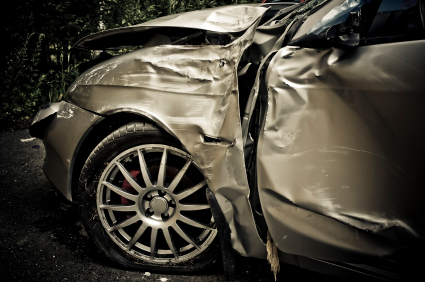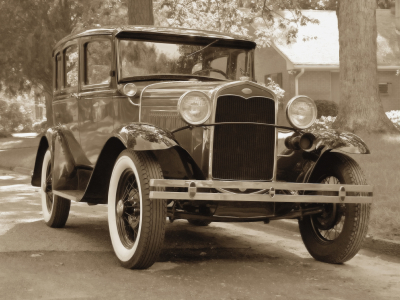No fault auto insurance defined, where you need it, different types of bodily injury coverage and criticisms of the no fault auto insurance model.

In the US, many urban drivers need no fault auto insurance.
When dealing with auto liability insurance, most of the United States is familiar with the concept of “fault.” That is, if someone hits your car and is found liable, his or her insurance company will pay to fix your car.
However, there are states where this isn’t the case. Instead, in these “no fault” states, your insurance may pay for any accidents you have regardless of what happens. No fault insurance can strike many as an odd concept. Indeed, even many insurance agents who don’t operate in no fault states may be unfamiliar with it.
But if you live in a no fault state, or are planning to move to one, you should be familiar with the concept.
What is No Fault Insurance?
Most states operate in a “traditional tort” auto insurance legal environment. That is, whoever is found at fault pays for an accident. However, as the number of uninsured and underinsured drivers rose despite legal insurance requirements, by the early 1970s many began to question this model. The proposed fix? Let your insurance fix your car regardless of fault. Hence, no fault insurance, also some times known as “personal injury protection” (PIP).
Although exact details vary from state to state, in its basic form no fault insurance works in much the same way as a zero deductible full coverage auto insurance policy. If your car needs fixed, it’s fixed on your insurance. This, however, is a very general overview. If you live in a no fault state, it’s important to discuss the specifics with your insurance agent.
The concept of legal liability remains much the same in no fault auto insurance states. Fault is still assigned. The difference is if you’re found at fault, your insurance increases your rates after all claims are paid. If you’re not, they don’t.
No fault insurance jurisdictions tend to be urban with large numbers of uninsured drivers, although there are exceptions. Currently no fault auto jurisdictions in the United States are: Florida, Hawaii, Kansas, Massachusetts, Michigan, Minnesota, New York, North Dakota, Puerto Rico and Utah. Three other states, Kentucky, New Jersey and Pennsylvania, allow drivers to choose either a no fault or a traditional tort auto insurance policy. All Canadian provinces and territories employ some form of no fault insurance.
Qualitative and Quantitative Threshold in No Fault Insurance
Because bodily injury claims are also paid by one’s own insurance rather than by someone else’s, there is no separate medical payments coverage in no fault states. That’s part of your liability coverage. However, some no fault states set a “qualitative threshold” on bodily injury claims, while others employ a “quantitative threshold.”
Quantitative threshold no fault insurance sets a monetary limit that must be spent on medical bills directly resulting from an accident before a tort can can be pursued. Qualitative threshold no fault insurance allows a tort only for particularly serious bodily injury categories, such as death or permanent disfigurement.
Criticisms of No Fault Insurance
In the 1970s approximately half the United States experimented with no fault auto insurance. However, over time several states returned to the traditional tort model. Why? Well, as it turns out no fault auto insurance does have a couple major drawbacks.
A common criticism of no fault auto insurance is that it’s expensive. Indeed, insurance rates in no fault states tend to be higher than rates in traditional tort states for similar policies. This could be due to any number of factors, including increased insurance company risk exposure in no fault states as well as the high number of uninsured drivers who tend to operate in no fault states.
No fault insurance states also tend to have fraud issues on levels simply not seen elsewhere. This is particularly true in New York and Florida, which have both experienced serious auto insurance fraud trends in recent years. The problem has been particularly bad in New York City, where no fault auto insurance fraud continues to comprise a significant amount of the city’s civil court caseload despite state attempts to address the situation.
No fault auto insurance defined, where you need it, different types of bodily injury coverage and criticisms of the no fault auto insurance model.
When dealing with auto liability insurance, most of the United States is familiar with the concept of “fault.” That is, if someone hits your car and is found liable, his or her insurance company will pay to fix your car.
However, there are states where this isn’t the case. Instead, in these “no fault” states, your insurance may pay for any accidents you have regardless of what happens. No fault insurance can strike many as an odd concept. Indeed, even many insurance agents who don’t operate in no fault states may be unfamiliar with it.
But if you live in a no fault state, or are planning to move to one, you should be familiar with the concept.
What is No Fault Insurance?
Most states operate in a “traditional tort” auto insurance legal environment. That is, whoever is found at fault pays for an accident. However, as the number of uninsured and underinsured drivers rose despite legal insurance requirements, by the early 1970s many began to question this model. The proposed fix? Let your insurance fix your car regardless of fault. Hence, no fault insurance, also some times known as “personal injury protection” (PIP).
Although exact details vary from state to state, in its basic form no fault insurance works in much the same way as a zero deductible full coverage auto insurance policy. If your car needs fixed, it’s fixed on your insurance. This, however, is a very general overview. If you live in a no fault state, it’s important to discuss the specifics with your insurance agent.
The concept of legal liability remains much the same in no fault auto insurance states. Fault is still assigned. The difference is if you’re found at fault, your insurance increases your rates after all claims are paid. If you’re not, they don’t.
No fault insurance jurisdictions tend to be urban with large numbers of uninsured drivers, although there are exceptions. Currently no fault auto jurisdictions in the United States are: Florida, Hawaii, Kansas, Massachusetts, Michigan, Minnesota, New York, North Dakota, Puerto Rico and Utah. Three other states, Kentucky, New Jersey and Pennsylvania, allow drivers to choose either a no fault or a traditional tort auto insurance policy. All Canadian provinces and territories employ some form of no fault insurance.
Qualitative and Quantitative Threshold in No Fault Insurance
Because bodily injury claims are also paid by one’s own insurance rather than by someone else’s, there is no separate medical payments coverage in no fault states. That’s part of your liability coverage. However, some no fault states set a “qualitative threshold” on bodily injury claims, while others employ a “quantitative threshold.”
Quantitative threshold no fault insurance sets a monetary limit that must be spent on medical bills directly resulting from an accident before a tort can can be pursued. Qualitative threshold no fault insurance allows a tort only for particularly serious bodily injury categories, such as death or permanent disfigurement.
Criticisms of No Fault Insurance
In the 1970s approximately half the United States experimented with no fault auto insurance. However, over time several states returned to the traditional tort model. Why? Well, as it turns out no fault auto insurance does have a couple major drawbacks.
A common criticism of no fault auto insurance is that it’s expensive. Indeed, insurance rates in no fault states tend to be higher than rates in traditional tort states for similar policies. This could be due to any number of factors, including increased insurance company risk exposure in no fault states as well as the high number of uninsured drivers who tend to operate in no
No fault auto insurance defined, where you need it, different types of bodily injury coverage and criticisms of the no fault auto insurance model.
When dealing with auto liability insurance, most of the United States is familiar with the concept of “fault.” That is, if someone hits your car and is found liable, his or her insurance company will pay to fix your car.
However, there are states where this isn’t the case. Instead, in these “no fault” states, your insurance may pay for any accidents you have regardless of what happens. No fault insurance can strike many as an odd concept. Indeed, even many insurance agents who don’t operate in no fault states may be unfamiliar with it.
But if you live in a no fault state, or are planning to move to one, you should be familiar with the concept.
What is No Fault Insurance?
Most states operate in a “traditional tort” auto insurance legal environment. That is, whoever is found at fault pays for an accident. However, as the number of uninsured and underinsured drivers rose despite legal insurance requirements, by the early 1970s many began to question this model. The proposed fix? Let your insurance fix your car regardless of fault. Hence, no fault insurance, also some times known as “personal injury protection” (PIP).
Although exact details vary from state to state, in its basic form no fault insurance works in much the same way as a zero deductible full coverage auto insurance policy. If your car needs fixed, it’s fixed on your insurance. This, however, is a very general overview. If you live in a no fault state, it’s important to discuss the specifics with your insurance agent.
The concept of legal liability remains much the same in no fault auto insurance states. Fault is still assigned. The difference is if you’re found at fault, your insurance increases your rates after all claims are paid. If you’re not, they don’t.
No fault insurance jurisdictions tend to be urban with large numbers of uninsured drivers, although there are exceptions. Currently no fault auto jurisdictions in the United States are: Florida, Hawaii, Kansas, Massachusetts, Michigan, Minnesota, New York, North Dakota, Puerto Rico and Utah. Three other states, Kentucky, New Jersey and Pennsylvania, allow drivers to choose either a no fault or a traditional tort auto insurance policy. All Canadian provinces and territories employ some form of no fault insurance.
Qualitative and Quantitative Threshold in No Fault Insurance
Because bodily injury claims are also paid by one’s own insurance rather than by someone else’s, there is no separate medical payments coverage in no fault states. That’s part of your liability coverage. However, some no fault states set a “qualitative threshold” on bodily injury claims, while others employ a “quantitative threshold.”
Quantitative threshold no fault insurance sets a monetary limit that must be spent on medical bills directly resulting from an accident before a tort can can be pursued. Qualitative threshold no fault insurance allows a tort only for particularly serious bodily injury categories, such as death or permanent disfigurement.
Criticisms of No Fault Insurance
In the 1970s approximately half the United States experimented with no fault auto insurance. However, over time several states returned to the traditional tort model. Why? Well, as it turns out no fault auto insurance does have a couple major drawbacks.
A common criticism of no fault auto insurance is that it’s expensive. Indeed, insurance rates in no fault states tend to be higher than rates in traditional tort states for similar policies. This could be due to any number of factors, including increased insurance company risk exposure in no fault states as well as the high number of uninsured drivers who tend to operate in no fault states.
No fault insurance states also tend to have fraud issues on levels simply not seen elsewhere. This is particularly true in New York and Florida, which have both experienced serious auto insurance fraud trends in recent years. The problem has been particularly bad in New York City, where no fault auto insurance fraud continues to comprise a significant amount of the city’s civil court caseload despite state attempts to address the situation.
fault states.
No fault insurance states also tend to have fraud issues on levels simply not seen elsewhere. This is particularly true in New York and Florida, which have both experienced serious auto insurance fraud trends in recent years. The problem has been particularly bad in New York City, where no fault auto insurance fraud continues to comprise a significant amount of the city’s civil court caseload despite state attempts to address the situation.





